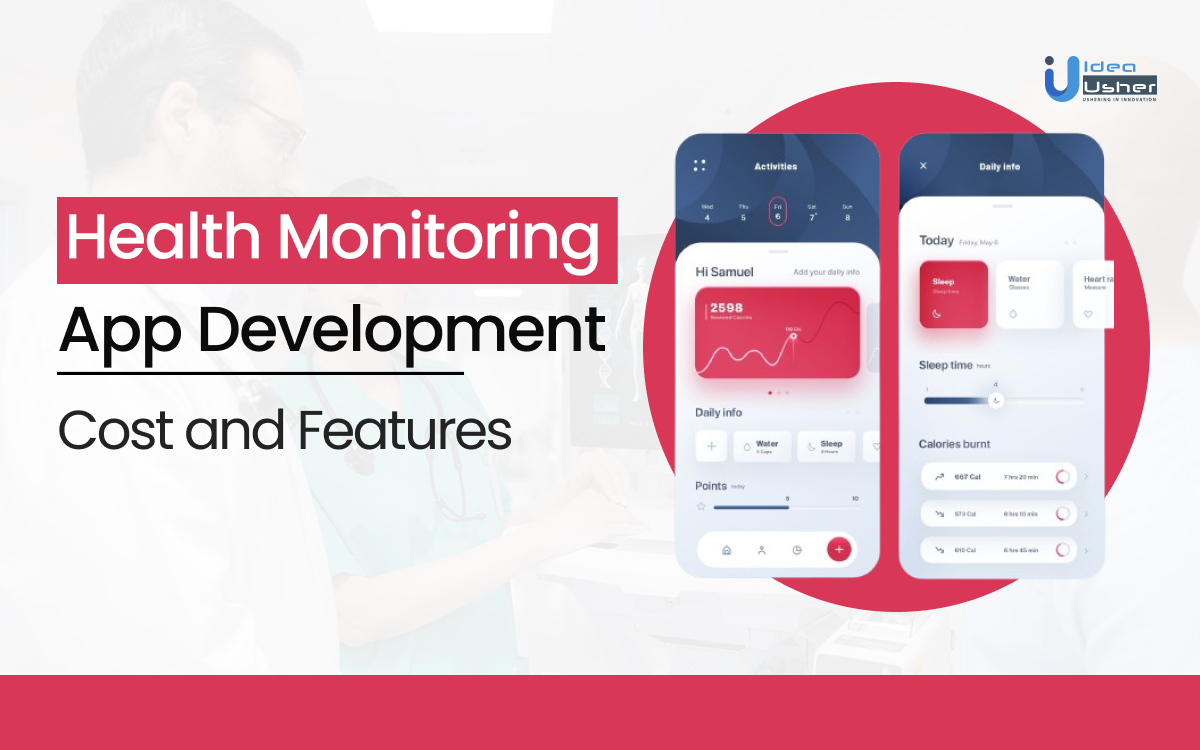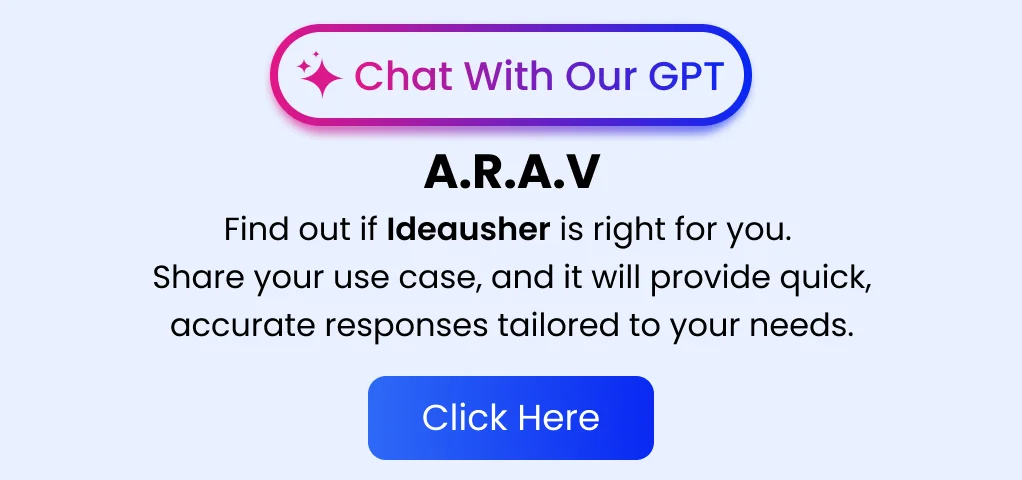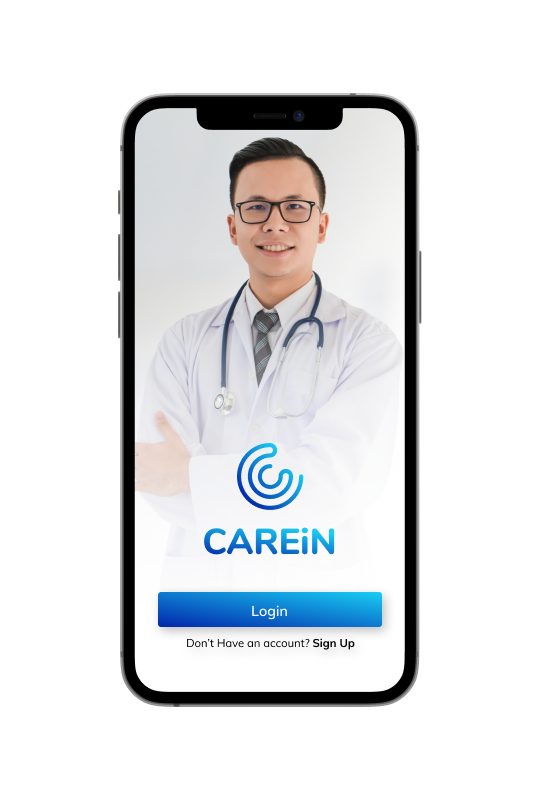Staying healthy can feel tough in today’s fast-paced world, with work, family, and other commitments taking up so much of our time. Health monitoring apps provide an easy and accessible way to keep track of your well-being. These apps allow you to monitor vital signs and fitness goals and even manage chronic conditions. By gathering data on your health, they offer helpful insights that can guide you in making smarter lifestyle choices. Whether people want to improve their health, lose weight, or keep an eye on a specific condition, health monitoring apps are a great companion on the wellness journey.
The global market for health monitoring apps is expected to grow from USD 36.68 billion in 2024 to USD 88.70 billion by 2032, with a CAGR of 11.49% during this time. It’s clear that more and more people are using these apps to keep track of their health and stay well. This industry is full of potential, and businesses have a great opportunity to tap into the rising demand!
Due to these trends, the US market is experiencing a significant rise in health monitoring apps. In this blog, we’ll guide you through developing a user-friendly health-monitoring app, packed with amazing features that will make your app stand out!
What is a Health Monitoring App?
A health monitoring app is a handy digital tool that helps you keep track of different aspects of your health. These apps can do a lot, like monitor your steps, heart rate, sleep patterns, calorie intake, and even remind you to take your medication. By offering personalized insights and data, these healthcare apps help you make better decisions about your well-being, spot potential health issues early, and enhance your overall lifestyle. Some popular examples include Fitbit, MyFitnessPal, Apple Health, Google Fit, and Calm.
Key Market Takeaways for Health Monitoring Apps
Source: GrandViewResearch
The growing popularity of wearable devices, which can include smartwatches and fitness trackers, has further contributed to the growth of the health monitoring app market. These devices seamlessly integrate with apps to provide comprehensive data on physical activity, heart rate, sleep patterns, and other health metrics. For example, Fitbit and Garmin have formed partnerships with various health monitoring apps to offer integrated tracking solutions.
Other popular health monitoring apps include MyFitnessPal, Lose It!, Calm, and Headspace. These apps often partner with healthcare providers, insurance companies, and wearable device manufacturers to offer additional features and benefits. For instance, MyFitnessPal has partnered with Under Armour to provide integrated tracking and rewards, while Calm has partnered with healthcare providers to offer their app as a benefit to their employees.
Work with Ex-MAANG developers to build next-gen apps schedule your consultation now
Understanding the Business Model of Health Monitoring Apps
Let’s explore some popular revenue models for health monitoring apps,
1. Freemium Model
The Freemium Model offers a low barrier to entry by providing a basic version of the app for free. However, converting free users to paying subscribers can be challenging. MyFitnessPal is a prime example, offering a free version with limited features while enticing users to upgrade to Premium for personalized meal plans and macronutrient tracking. The Premium subscription starts at $7.99 per month.
2. Subscription Model
Subscription Model provides a consistent revenue stream by charging app users a recurring fee for access to the app’s full features. Fitbit Premium is a popular example, offering advanced analytics, coaching, and exclusive features. The Premium subscription costs $9.99 per month.
3. In-App Purchases
In-App Purchases offer flexibility by allowing users to purchase additional features or content as needed. Apple Health provides various in-app purchases, such as personalized health reports, which can cost $4.99.
4. Advertising
Advertising can also be a significant revenue source for apps with large user bases. Lose It! incorporates ads but offers an ad-free subscription option for $3.99 per month.
Developing a Health Monitoring App: A Detailed Guide
Developing a health monitoring app requires careful planning to ensure it meets the needs of the target audience while adhering to industry standards. Businesses looking to enter this market must focus on several critical features and development aspects to create a successful app.
1. Define Your Target Audience and Goals
Identifying the target audience is actually the very first step for companies. Businesses must determine who will benefit most from the app, such as individuals managing chronic conditions or fitness enthusiasts. Setting clear objectives is equally important. This includes specifying which health metrics the app will track, such as heart rate, blood pressure, or sleep patterns.
2. Integrate with Health Hardware
Compatibility with various health-tracking devices is essential. The app must seamlessly connect with smartwatches, fitness trackers, and medical devices like blood pressure monitors. To ensure a quality user experience, businesses should prioritize the accuracy of data collected from these devices, which plays a crucial role in user satisfaction and trust.
3. Leverage Medical Expertise
Collaborating with healthcare professionals is vital for the development process. Companies can consult with doctors, nutritionists, and other medical experts to ensure the app delivers medically accurate advice. Adhering to established medical guidelines and standards is necessary to maintain the app’s credibility and reliability in the healthcare space.
4. Implement Real-Time Monitoring and Alerts
Real-time monitoring is a key feature in health monitoring apps. Businesses should provide instant notifications for abnormal readings or potential health concerns. To enhance user engagement, clear and informative visualizations of health data can help users better understand their condition and make better decisions.
5. Offer Personalized Health Plans
Personalization is a growing trend in healthcare apps. By using data collected from users, companies can create tailored health plans based on individual goals and needs. These plans can track progress, motivating users to reach their health objectives and improve their overall well-being.
6. Address Medical Disclaimers
It’s important for businesses to make it clear that the app isn’t a substitute for professional medical advice. Including medical disclaimers helps protect the app from liability and ensures that users understand the app’s role in their health management. This way, users can use the app confidently while knowing it complements, rather than replaces, expert medical guidance.
7. Consider Integration with Electronic Health Records
Integrating with EHRs is a valuable feature for businesses seeking to add more functionality to their app. This ensures interoperability between the app and healthcare providers, allowing seamless data sharing. Facilitating the exchange of health data benefits users and improves care coordination between patients and medical professionals.
8. Facilitate Remote Monitoring and Consultation
Telemedicine features are becoming more prevalent in health monitoring apps. Businesses can incorporate virtual consultation options, allowing users to connect with healthcare professionals for remote monitoring and advice. Features like video conferencing support remote care and improve access to healthcare services, making the app even more valuable.
Cost of Developing A Health Monitoring App:
| Component | Cost Range | Scope |
| Research and Development | $2,000 – $8,000 | – NLP Model Selection: Choose an appropriate pre-trained model like BERT or GPT to avoid the need for training from scratch.- Data Acquisition: Basic data collection and preparation, including cleaning and labeling datasets.- Customization: Minor adjustments or fine-tuning to ensure the model meets the app’s requirements. |
| Front-End Development | $1,500 – $7,000 | – UI Design: Create a simple, intuitive user interface that allows users to interact with the NLP system, whether through text input or other forms.- Integration: Connect the front-end with the NLP backend for seamless processing of user requests and outputs. |
| Back-End Development | $3,000 – $15,000 | – Model Deployment: Deploy the selected NLP model on a cloud platform or local server.- API Development: Create APIs to facilitate communication between the front-end and the NLP model.- Data Management: Set up basic data storage solutions for handling user data and model interactions. |
| App Features | $2,000 – $20,000 per feature | – Text Analysis: Implement features like sentiment analysis or topic modeling.- Natural Language Generation (NLG): Simple features to generate short human-like text responses.- Speech Recognition/Synthesis: Basic real-time speech processing capabilities (if needed). |
| Testing and Quality Assurance | $1,000 – $4,000 | – Manual Testing: Test the app manually to identify bugs and issues in functionality and user experience.- Automated Testing: Implement basic automated testing to streamline quality checks, focusing on key NLP functions. |
| UI/UX Design | $500 – $3,000 | – User Experience (UX): Design a user journey that is easy to navigate and provides a smooth interaction with NLP features.- User Interface (UI): Focus on making the interface visually appealing, responsive, and consistent with the app’s branding. |
| Overall Cost Estimate | $10,000 – $100,000 | Total cost of developing the NLP app based on the complexity, features, and development scope. |
While the general factors influencing app development costs apply to health monitoring apps, several unique aspects can affect their specific cost:
Data Privacy and Security
Ensuring stringent measures to protect sensitive health data requires additional resources and expertise. Compliance with regulations like HIPAA or GDPR can increase development time and costs.
Integration with Medical Devices
Integrating with wearable devices, medical sensors, or other health-related hardware can introduce complexities and increase development time.
Algorithm Complexity
Developing accurate algorithms for data analysis, personalized recommendations, or predictive analytics can require specialized expertise and computational resources.
Regulatory Compliance
Adhering to healthcare-specific regulations, such as FDA clearance or CE marking, can involve additional documentation, testing, and certifications, increasing costs.
Tech Stacks Required to Develop a Health Monitoring App
Developing a health monitoring app requires the integration of various technologies to ensure seamless functionality, data processing, and a user-friendly interface. By using the right tech stacks, businesses can build apps that meet the growing demand in the healthcare industry.
1. Front-End Development
For the app’s interface, using languages such as HTML, CSS, and JavaScript is crucial. These technologies help in building the visual aspects of the app, ensuring that app users can navigate smoothly. Frameworks like React, Angular, and Vue.js are popular choices among companies, as they allow for dynamic and responsive designs. Incorporating UI libraries such as Material UI, Bootstrap, and Foundation ensures that health-related icons, progress bars, and data visualization components are integrated effectively into the app, improving user experience.
2. Medical Device Integration
Connecting the app with wearable devices and medical sensors is essential for real-time health tracking. Protocols like Bluetooth Low Energy (BLE), ANT+, and Wi-Fi facilitate this communication between devices and the app. Additionally, businesses can leverage SDKs provided by manufacturers of medical devices, such as fitness trackers and other health-related hardware, to integrate these technologies directly into the app.
3. Healthcare Data Standards
Ensuring that the app adheres to healthcare data standards is critical for interoperability with other systems. HL7 FHIR allows for smooth data exchange between healthcare systems. DICOM is another important standard for handling medical imaging data, ensuring that the app can process and store information effectively.
4. Biometric Data Processing
Accurate biometric data processing is a key feature of health monitoring apps. Algorithms that analyze heart rate variability detect sleep stages, and assess gait patterns can provide users with valuable insights into their health. Open-source libraries can help companies process specific biometric data, reducing development time and cost.
5. Health-Related APIs
To offer additional value, businesses can integrate APIs from popular fitness trackers like Fitbit, Garmin, and Apple HealthKit. These APIs allow the app to gather health data directly from users’ devices. In addition, incorporating medical databases such as Mayo Clinic API and WebMD API can provide users with up-to-date health information. Integrating with EHRs further enhances the app’s ability to deliver comprehensive health insights.
6. Health Data Visualization
Specialized libraries for health data visualization play a vital role in displaying metrics like heart rate, blood pressure, and sleep patterns. By presenting this data clearly and engagingly, businesses can enhance user engagement and help individuals better understand their health status.
7. Health-Related Machine Learning Models
AI-powered machine learning models are transforming the health app industry. By using these models, companies can predict disease onset based on collected data and offer personalized recommendations tailored to users’ health profiles. This creates a more proactive and customized healthcare experience, leading to better outcomes for users.
Latest Technologies That Can Enhance a Health Monitoring App
The integration of advanced technologies into health monitoring apps is crucial for improving user engagement and enhancing health outcomes. Three recently developed technologies that can significantly enhance these applications are wearable health devices, AI, and telemedicine solutions.
1. Wearable Health Devices
Wearable health devices have transformed health monitoring by providing real-time data collection on vital signs such as heart rate, activity levels, and even sleep patterns. Companies like Fitbit and Apple have developed devices that seamlessly connect with health apps, enabling users to track their wellness and share data with healthcare providers. According to recent studies, the use of wearables has led to a 30% increase in user engagement with health management, allowing for proactive interventions and improved health outcomes.
2. Artificial Intelligence
AI is playing a really important role in health monitoring apps by offering personalized insights and predictive analytics. AI algorithms analyze data from wearables and user inputs to identify trends and recommend lifestyle changes. For instance, IBM Watson Health uses AI to process large datasets, providing actionable health insights that help users manage chronic conditions effectively. Research indicates that AI-driven health monitoring can improve patient adherence to treatment plans by up to 50%, significantly enhancing overall health management.
3. Telemedicine Solutions
Telemedicine solutions have gained prominence in health monitoring apps, allowing healthcare providers to remotely monitor patients’ health conditions. This technology enables real-time data transmission from wearable devices to healthcare professionals, facilitating timely interventions. Companies like Teladoc Health have successfully integrated telemedicine into their platforms, enabling healthcare providers to conduct virtual consultations and monitor chronic conditions without requiring frequent hospital visits. Statistics show that telemedicine can reduce hospital readmissions by approximately 20%, highlighting its effectiveness in managing patient health remotely.
Top 5 Health Monitoring Apps in the USA
Here are five of the top health monitoring apps in the USA:
1. MyFitnessPal
MyFitnessPal is a leading calorie-counting and nutrition-tracking app that was founded in 2005. With over 200 million downloads, it has become a staple for individuals looking to manage their diet and exercise. The app boasts a comprehensive food database and community support features, making it user-friendly and engaging. In 2023, MyFitnessPal generated approximately $310 million in revenue, capturing over 40% of the health app market share. The app collaborates with various fitness trackers and wearable devices, enhancing its functionality and user experience. Its acquisition by Under Armour in 2015 for about $475 million further solidified its position in the health and wellness sector.
2. Fitbit
Fitbit, established in 2007, is renowned for its wearable devices and the accompanying app that tracks a wide range of health metrics, including steps, heart rate, and sleep patterns. The application has millions of active users and integrates seamlessly with Fitbit devices, providing personalized health insights. Fitbit has formed strategic partnerships with healthcare providers and insurance companies to promote wellness initiatives. In 2021, Fitbit was acquired by Google for $2.1 billion, which has allowed it to leverage Google’s technology and data analytics capabilities to enhance its health monitoring offerings.
3. Headspace
Founded in 2010, Headspace is a meditation and mindfulness app that has attracted millions of users globally. The app offers guided meditation sessions aimed at reducing stress and improving mental well-being. Headspace has successfully partnered with various corporate wellness programs and healthcare providers to promote mental health awareness. The company has raised over $75 million in funding, reflecting its growth and commitment to enhancing mental health through accessible resources.
4. HealthTap
HealthTap, launched in 2010, is a telemedicine app that connects users with healthcare professionals for virtual consultations. It offers a nice range of medical services, including prescription refills and lab test ordering, and has millions of users. HealthTap collaborates with healthcare providers and insurance companies to enhance access to medical care. The company has secured over $100 million in funding, emphasizing its role in the telehealth market and its mission to improve healthcare accessibility for users.
5. Sleep Cycle
It’s a sleep-tracking app that was founded in 2009. The app uses sound technology to analyze users’ sleep patterns and wake them during their lightest sleep phase. With millions of downloads, Sleep Cycle is recognized for its effectiveness in improving sleep quality. The app collaborates with various wearable device manufacturers to enhance its functionality. The company has raised around $10 million in funding, showcasing its dedication to advancing sleep health and wellness to various health goals. Here are five of the top health monitoring apps in the USA:
Conclusion
Health monitoring apps offer individuals greater control over their health, enabling them to track metrics, manage conditions, and make informed choices. These apps can improve health outcomes and quality of life by providing personalized insights and reminders. Healthcare businesses can benefit from developing health monitoring apps by attracting new patients, gaining valuable data insights, and improving patient care. By investing in these apps, businesses can enhance their services, improve outcomes, and generate new revenue.
Looking to Develop a Health Monitoring App?
At Idea Usher, we specialize in crafting innovative health monitoring solutions that empower individuals to take control of their well-being. With over 500,000 hours of coding experience in the field, our team of experts is well-equipped to design and develop cutting-edge apps tailored to your specific needs. From tracking vital signs and activity levels to providing personalized insights and reminders, we utilize advanced technologies to create intuitive and effective health monitoring solutions. Let us help you create an app that promotes healthier lifestyles and improves overall patient outcomes.
Work with Ex-MAANG developers to build next-gen apps schedule your consultation now
FAQs
Q1: How to make a health monitoring app?
A2: Developing a health monitoring app requires careful planning, design, development, and testing. Key considerations include defining the target audience and app features, designing an intuitive UI, choosing suitable technology, integrating with hardware devices, developing algorithms for data analysis, ensuring data security, conducting thorough testing, launching the app, and ongoing maintenance. By addressing these aspects, people can create a successful health-monitoring app that provides valuable insights and helps users improve their well-being.
Q2: What are the features of a health tracker app?
A2: Health tracker apps provide numerous features that assist users in monitoring and managing their overall health. Common functionalities include tracking physical activity, monitoring heart rate, utilizing GPS for tracking movement, and logging nutritional intake. These apps may also offer medication reminders, analyze health data, and integrate with various devices for a more holistic approach. While the specific features may differ across apps, their primary goal is to equip users with essential tools to effectively track and enhance their well-being.
Q3: How much does it cost to develop a health app?
A3: The expense of developing a health app can fluctuate a lot based on factors such as complexity, platform, development resources, and regulatory requirements. While basic apps may be more affordable, complex apps with advanced features can be more costly. It’s essential to obtain accurate cost estimates from multiple developers to ensure you’re getting a fair price for your project.
Q4: How long does it take to develop a health monitoring app?
A4: The development time for a health monitoring app can vary on factors such as complexity, platform, development resources, and regulatory requirements. While simple apps might be developed in a few months, more complex ones can take up to a year or longer. Allocating sufficient time and resources is crucial for successful development, testing, and ongoing maintenance.





















